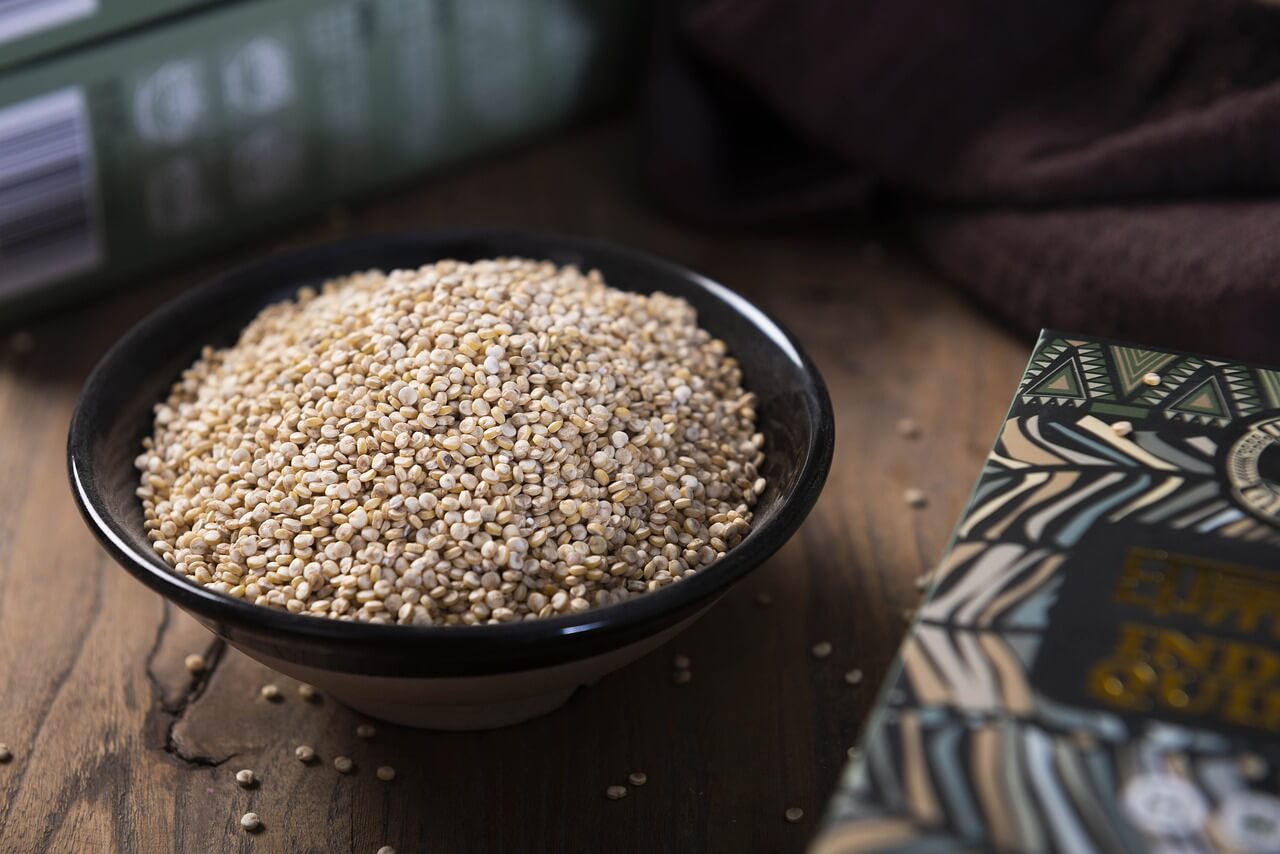Quinoa is growing in popularity as it is a great substitute for rice or pasta. It’s one of the few plant-based products that have the full range of essential amino acids we need to stay healthy, and it is low fat and packed full of beneficial nutrients. In this article, we will be looking at how to rinse quinoa and remove saponins which give it a bitter flavor.
What You'll Learn Today
Is it Necessary to Rinse Quinoa?

Most pre-packaged quinoa is already rinsed by the manufacturer, and this will be stated somewhere on the packaging. If the quinoa is not of the pre-rinsed type, then it is necessary to give it a good wash-off in order to remove the bitter-tasting saponins that coat the seeds.
The saponins are used by the plant to protect itself from birds and insects, making the seeds very unappealing to eat. When larger animals feed on the seeds, the saponins protect them as they pass through the creature’s digestive tract and effectively use the animal as a transportation system to spread the seeds far and wide when the animal excretes them.
Many people even choose to rinse the already washed varieties, just to get rid of any remaining residue. Although this isn’t strictly necessary, it certainly can’t hurt. So the choice is really up to you.
In this video, you will see the results of an experiment between washing and not washing different types of quinoa:
Should You Soak or Rinse Quinoa?
You can soak quinoa if you want to sprout it. Like other sprouts, they are highly nutritious and have a more interesting flavor than un-sprouted seeds.
You can also toast quinoa seeds and then rinse them to improve their flavor profile.
Another reason you may want to soak your quinoa is if you’ve purchased a type that isn’t already cleaned of saponins. To really make sure you’ve done your best to remove the coating of this bitter-tasting chemical, you can soak the grains for a while before rinsing thoroughly.
There is also an article by Dr. Axe that says by pre-soaking quinoa, you can remove some of the phytic acids in the seeds and improve digestibility and nutrient availability.
So in answer to the question should you soak or rinse your quinoa, I’d say that it is really a personal choice. For me, if I have the time, then sure, I’ll give them a soak and then rinse them off.
If you do choose to soak your quinoa, then you’ll need to put it into a deep bowl and cover it with plenty of water, so it is submerged by about one inch. Allow the quinoa to remain in the water for an hour or more and give it a stir every now and then.
Once soaked, drain the quinoa using a fine-mesh sieve (or another method) and rinse well under cold running water for about a minute.
How Do You Rinse Quinoa Without Making a Mess?

Quinoa seeds are very tiny and are often small enough to pass through the holes of a strainer. If you have a fine-mesh sieve, you should be fine, but if not, you may want to try one of the other methods I’ll talk about below in “How to rinse quinoa without a strainer”.
Can You Rinse Cooked Quinoa With Cold Water?
If you really want to rinse the quinoa after you’ve cooked it, by all means, you can, but there really is no need to.
Quinoa holds a lot of water, and ideally you’ll want to be getting rid of some of that moisture rather than adding to it. To do this, after draining thoroughly using your fine mesh strainer, put the quinoa back into the now-empty pan you cooked it in.
Pop the lid on to keep it warm and let it sit for around 10 to 15 minutes. This will help to evaporate some of the excess moisture.
How to Rinse Quinoa Without Strainer

If you don’t have a fine-mesh strainer and you don’t want to be getting quinoa everywhere when you rinse it, then there are three other options you can try.
Use a cheesecloth
If you have some cheesecloth or muslin, then you can use that to rinse and strain your quinoa. Simply take a square of cloth, put the amount of quinoa you want in the center, draw up the sides, and rinse thoroughly under cold running water for 5 minutes.
Use a nut milk bag
If you have a nut milk bag, you can put your quinoa into that and use it as a strainer to rinse your seeds.
Use a plunger-type coffee maker
If you happen to have a plunger-type coffee maker in your cupboard, then it can make an effective quinoa strainer. Place the quinoa into the coffee maker, fill it with water and allow it to soak for a few minutes.
Now push down the plunger and drain off the water. Repeat four or five times until the water in the coffee maker is clear.
Even a coffee filter, the basket type from an electric coffee maker, can be utilized as a makeshift strainer.
Conclusion
However you decide to treat your quinoa, soaking, rinsing, or sprouting, you’ll need some kind of strainer to do it properly.
If you don’t have a fine-mesh strainer, be inventive and think of a suitable (hygenic) alternative.
One thing is for sure, you definitely do want to get the saponins off of your quinoa before cooking it and eating it. Or you’ll experience a nasty bitter taste at the very least.